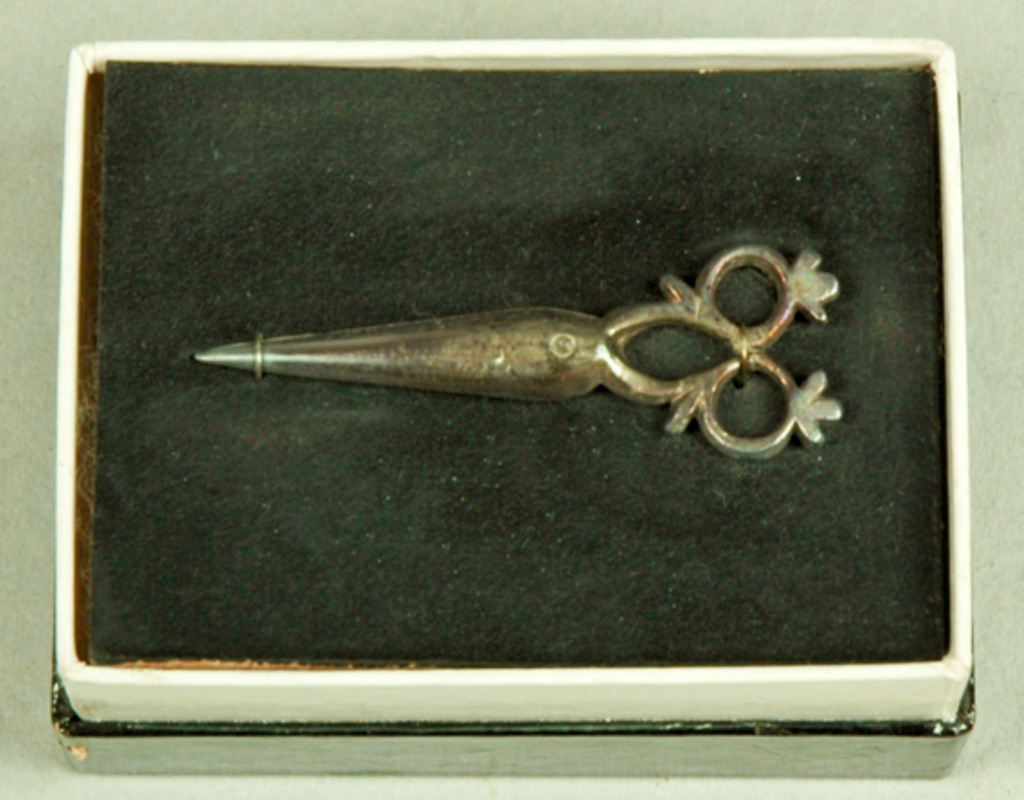Silver scissors charm
Crete, Greece, probably 19th century
 Collected and donated by Margaret A. Murray in 1910; 1910.9.1This small ornament (measuring 3.5 cm in length) was worn in the hair as a charm to prevent split ends. It dates to the mid- or late-19th century when hairdressers' scissors became specialized tools with open shanks and long, narrow, and finely tapered blades. Hairdressers themselves began to flourish as an industry: in 1859, there were 950 hairdressers (and hundreds more barber shops barbers) listed in London alone, as well as 47 hair merchants, manufacturers and wig-makers who imported 50 tonnes of hair each year to make hair pieces for the city's citizens.
Collected and donated by Margaret A. Murray in 1910; 1910.9.1This small ornament (measuring 3.5 cm in length) was worn in the hair as a charm to prevent split ends. It dates to the mid- or late-19th century when hairdressers' scissors became specialized tools with open shanks and long, narrow, and finely tapered blades. Hairdressers themselves began to flourish as an industry: in 1859, there were 950 hairdressers (and hundreds more barber shops barbers) listed in London alone, as well as 47 hair merchants, manufacturers and wig-makers who imported 50 tonnes of hair each year to make hair pieces for the city's citizens.
A principle reason to cut hair, in addition to keeping the length manageable, is to get rid of split ends (hence the charm taking the form of scissors). Split ends are caused when the protective cuticle at the end of the hair shaft deteriorates, often due to over-washing or exposure to heat, and the hair frays into one of more strands. Although the easiest and most effective way to remove split ends is cut them off, greasing them together and winding them up into curls or elaborate 'up' styles could conceal them instead. A process known as 'singeing' was introduced in the early 20th century that was supposed to prevent slit ends, strengthen the hair and maintain the shape of the cut. A wax taper (or later an electrical device) was passed across the ends of the hair and the charred ends removed by vigorous rubbing.
